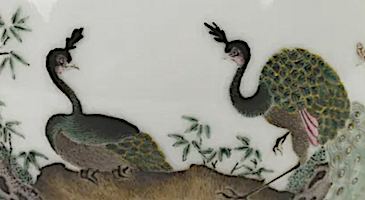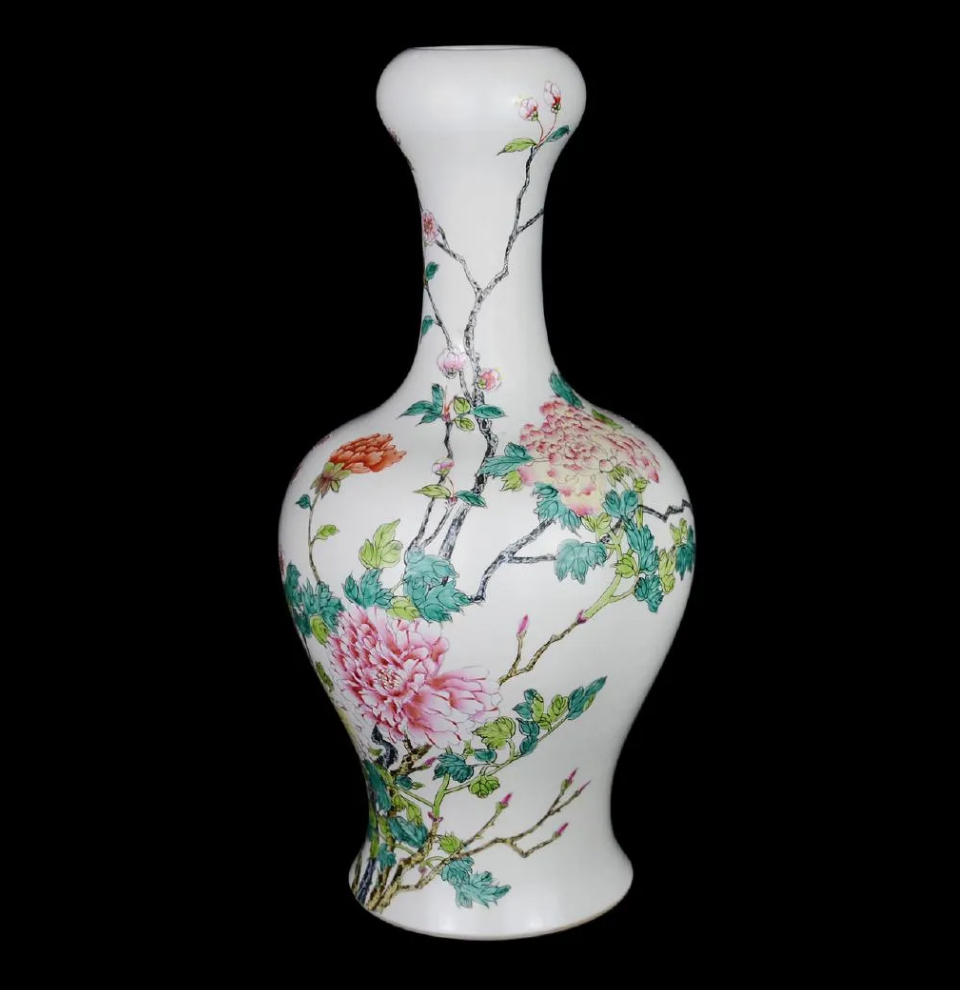
NEW YORK — Asian art and antiques are rich in symbolism. Among the most beloved fauna and flora motifs in this region and culture are peacocks and peonies — so much so that the two have even become fixtures in Western art.
The peacock is described in one of China’s most ancient and important books, the I Ching, or Book of Changes. It defines the peacock as a dignified and cultured bird that was seen as restrained, graceful and loyal.
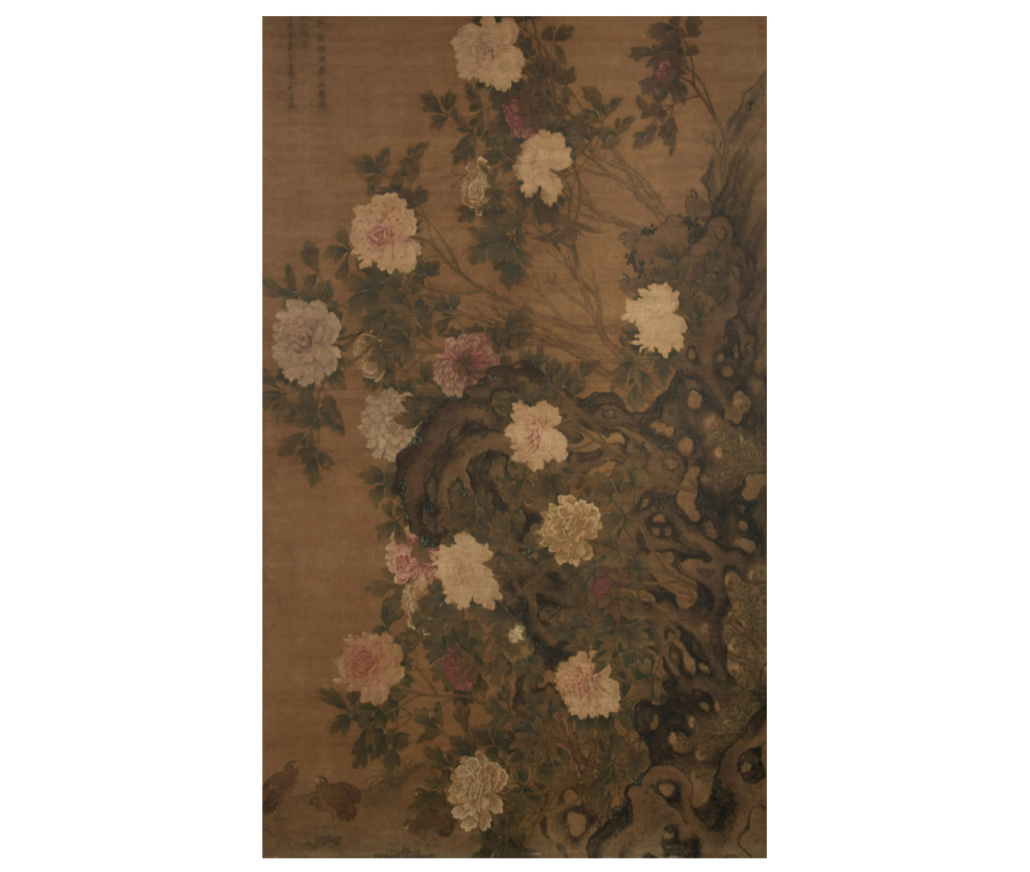
As time passed, the peacock became a symbol of enlightenment and success. In the Qing dynasty (1644-1911), only high-ranking officials were allowed to wear hats festooned with peacock feathers. Given the bird’s imperial significance, it also came to symbolize wealth and success.
As for the peony, Mary Ann Lum, co-owner of Gianguan Auctions in New York, said it is a unique woody flower originally native to China with more than 1,500 years of artificial cultivation history. “Tang Xianzu, a dramatist in the Ming dynasty, wrote The Peony Pavilion as a classic love play that has been handed down in Kunqu opera,” she said. “Its flowers are charming, luxurious and lush as a symbol of prosperity, happiness and peace. Whether in ancient times or contemporary, the peony is a pattern that can be seen everywhere in life, regarded as the king of flowers.”
Peonies appear in paintings and scrolls as well as on porcelain objects, such as a Qing famille rose peony garlic head mouth vase that earned $130,000 plus the buyer’s premium in June 2019 at Gianguan Auctions. The peony is pictured in riotous bloom with a palette of colors emphatically evident on its leafy stems.
The peacock and the peony are the individual subjects of many Asian artworks and objects, but occasionally they are shown together. A Yongzheng (1722-1735) enamel bowl featuring both made $60,000 plus the buyer’s premium in April 2020 at Margarita Auction Co. Enamel-decorated pieces such as this bowl represent an important milestone in China’s ceramics development, and the peony and peacock often decorate Imperial porcelain made in Beijing. The quality of its craftsmanship and artistry was renowned. The two peacocks on this bowl are depicted in an elegant manner, perched on a rock, with fine and vivid coloration.
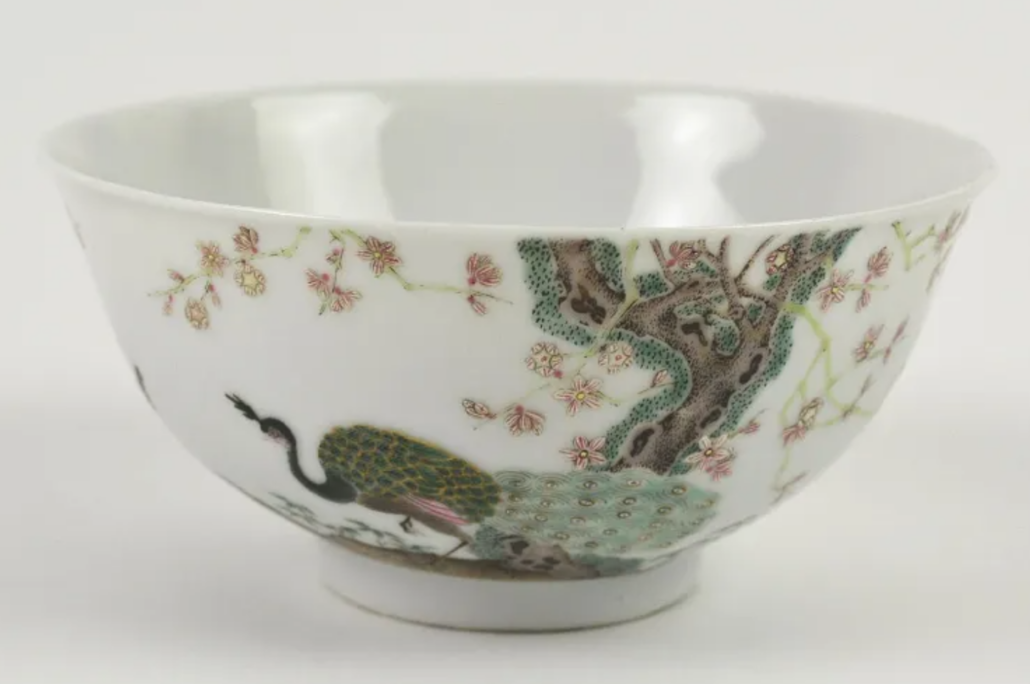
Peonies are often represented in art with other birds as well. An ink and color on silk artwork featuring peonies and quails, possibly from the Northern Song dynasty (960-1127) and attributed to Zhao Chang, sold for $200,000 plus the buyer’s premium in March 2021 at Hindman.
Screens and scroll paintings are also common mediums for peacock imagery, especially in the Chinese tradition. A framed silk embroidery peacock screen realized $95,000 plus the buyer’s premium at Maven Auction in January 2018.
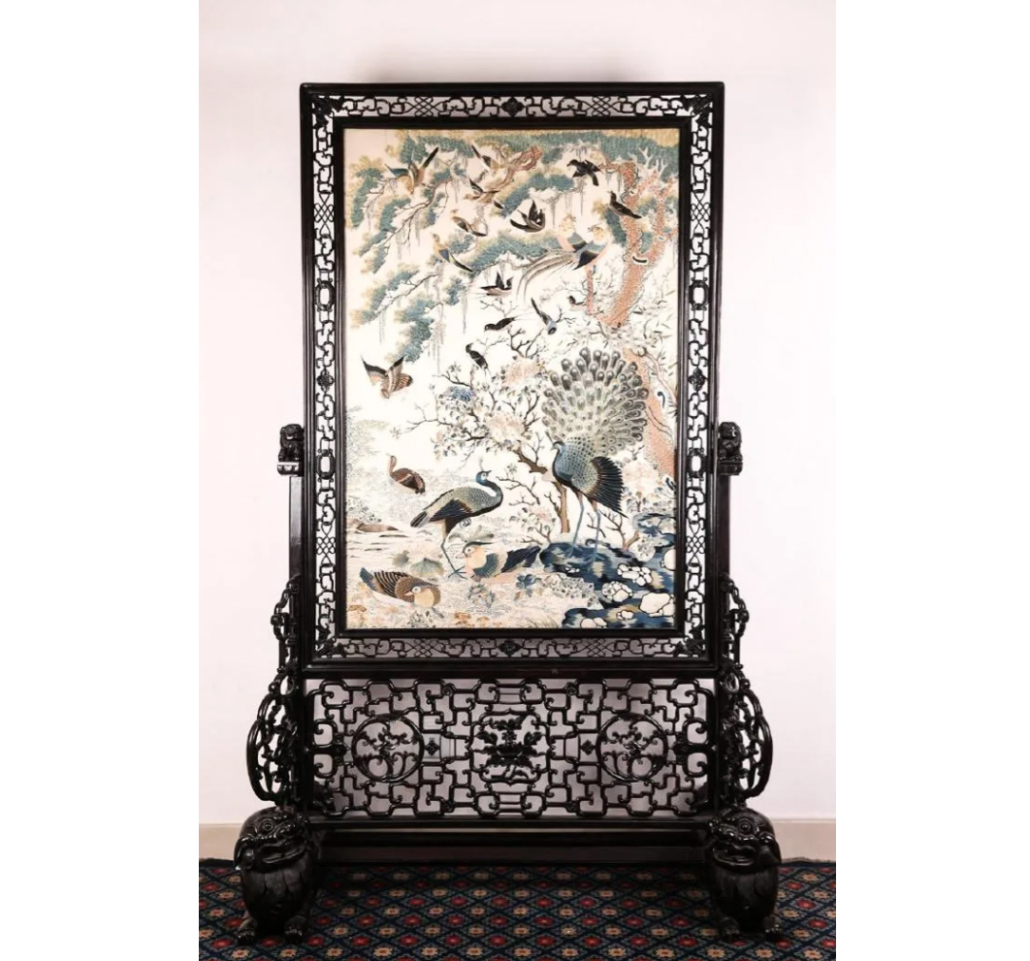
These motifs are far from being exclusively Eastern themes. Around the turn of the 20th century, Tiffany Studios and other makers of luxury goods designed objects that featured peonies and peacocks. Notable among them are a peacock chandelier shade that is almost entirely composed of Favrile feather glass, as well as Peony table lamp shades and vases.
In particular, Tiffany Studios made several models of lighting fixtures that sported shades decorated with peonies. Its model #1903 22in dome shade, which depicts a tree peony, appears to have only been produced from about 1913 to 1920. A circa-1915 example made $325,000 plus the buyer’s premium in September 2021 at Cottone Auctions. The peony on this table lamp boasts vivid coloration, ranging from deep reds and purples to light pinks, with a rainbow-like background.
Both the peacock and the peony are refined decorative elements whose popularity has endured for centuries. Whether seen on a Lalique vase, a Tiffany lamp shade or a Chinese porcelain bowl, these motifs are timeless and never fail to give flight to the imaginations of artisans.


